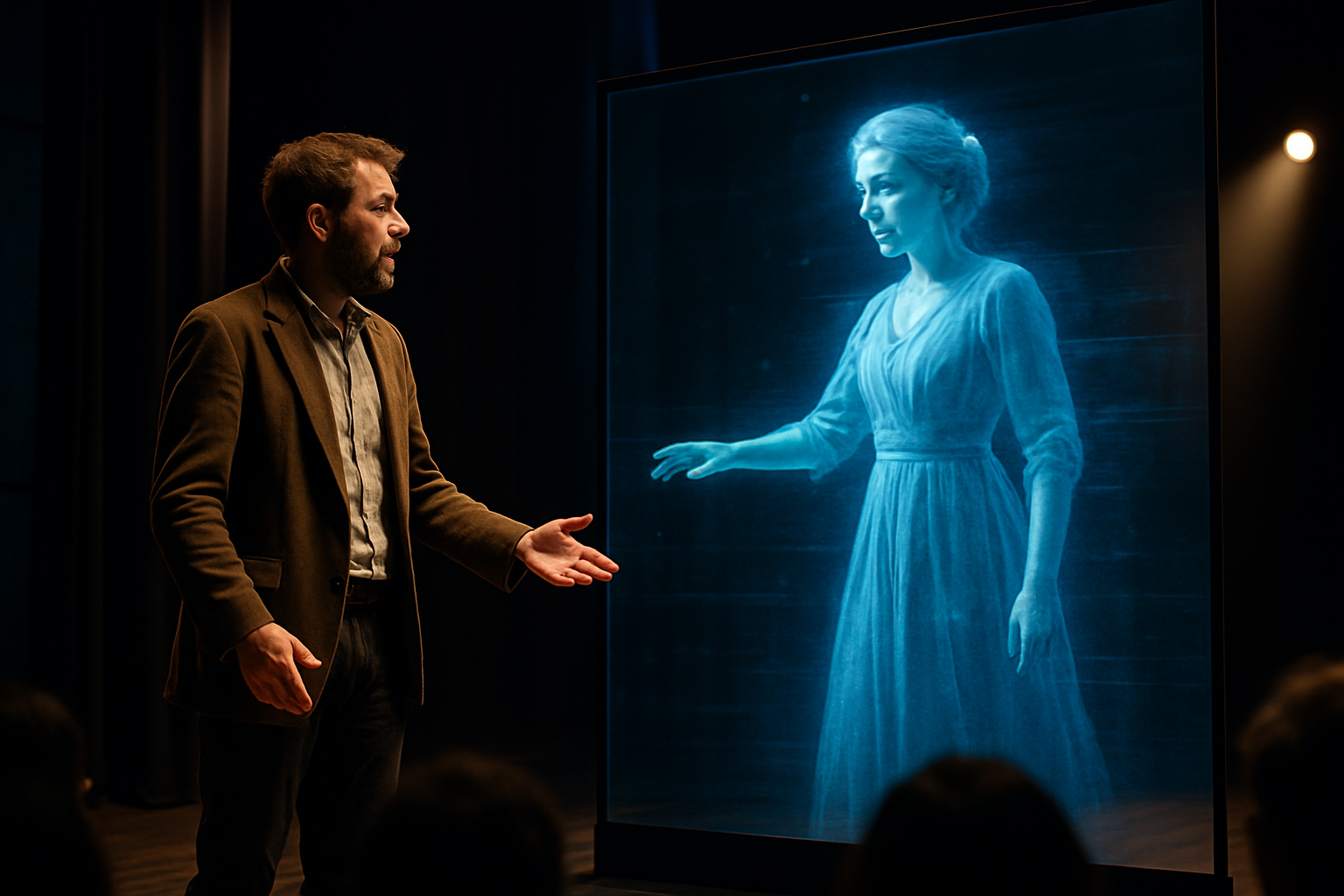Holographic Theater: Blending Reality and Illusion
In the ever-evolving landscape of performing arts, a groundbreaking form of entertainment is captivating audiences worldwide. Holographic theater, a fusion of cutting-edge technology and traditional stagecraft, is redefining the boundaries of live performance. This innovative medium blurs the line between reality and illusion, creating immersive experiences that challenge our perceptions and push the limits of artistic expression. As holographic projections seamlessly interact with flesh-and-blood actors, a new era of storytelling unfolds, promising to revolutionize the way we experience theater.

The first experiments in holographic theater emerged in the early 2000s, with pioneering productions featuring simple projected images alongside live actors. These early attempts, while groundbreaking, were limited in their scope and realism. The holograms were often static and lacked the ability to interact convincingly with their human counterparts.
As technology progressed, so did the possibilities for holographic theater. The development of more sophisticated projection systems, coupled with improvements in real-time rendering capabilities, allowed for increasingly complex and dynamic holographic elements to be incorporated into live performances.
Technological Marvels Behind the Curtain
At the heart of holographic theater lies a complex array of technologies working in harmony to create the illusion of three-dimensional figures sharing the stage with live actors. High-powered laser projectors, coupled with specially designed screens or fog walls, form the foundation of the holographic display system.
Advanced motion capture technology plays a crucial role in bringing holographic characters to life. Actors wearing specialized suits perform in separate studios, their movements translated in real-time to drive the actions of their digital counterparts on stage. This allows for seamless interaction between live performers and holographic elements, creating a truly immersive experience for the audience.
Sound design in holographic theater presents unique challenges and opportunities. Sophisticated audio systems are employed to create the illusion that holographic characters are speaking from specific locations on stage, further enhancing the sense of their physical presence.
Artistic Possibilities and Creative Challenges
Holographic theater opens up a world of creative possibilities for directors, writers, and performers. The ability to seamlessly blend the real and the virtual allows for storytelling that transcends the limitations of traditional theater. Historical figures can be brought back to life, fantastical creatures can roam the stage, and entire worlds can be conjured and dissolved in an instant.
However, this new medium also presents unique challenges for creators. Writers must craft narratives that effectively utilize the strengths of both live and holographic elements. Directors face the task of orchestrating performances that maintain a delicate balance between the tangible and the intangible. Actors must hone their skills in interacting convincingly with digital co-stars, often relying on their imagination and impeccable timing.
Impact on the Theatrical Landscape
The emergence of holographic theater has sent ripples through the performing arts community. Traditional theaters are investing in the necessary technology to stage holographic productions, while purpose-built venues are springing up in major cities around the world. These specialized theaters feature state-of-the-art projection and audio systems designed specifically for holographic performances.
Critics and audiences alike are divided in their reception of this new art form. Proponents hail it as a revolutionary step forward in theatrical storytelling, praising its ability to create spectacles that were previously impossible. Detractors argue that the technology may overshadow the human element of theater, potentially diminishing the intimacy and spontaneity that make live performance unique.
The Future of Holographic Theater
As technology continues to advance at a rapid pace, the future of holographic theater looks brighter than ever. Researchers are working on developing more sophisticated projection systems that can create even more realistic and interactive holograms. The integration of artificial intelligence could lead to holographic characters capable of improvising and responding to live actors in real-time, further blurring the line between the digital and the physical.
The potential applications of holographic theater extend beyond traditional theatrical venues. Educational institutions are exploring its use in interactive history lessons and scientific demonstrations. Museums are incorporating holographic elements into their exhibits, bringing artifacts and historical scenes to life in unprecedented ways.
As holographic theater continues to evolve, it challenges us to reconsider our notions of performance, reality, and the very nature of storytelling. Whether it will become a mainstay of the theatrical world or remain a niche form of entertainment remains to be seen. What is certain, however, is that holographic theater represents a bold step into uncharted artistic territory, offering a glimpse into the future of live performance in the digital age.





